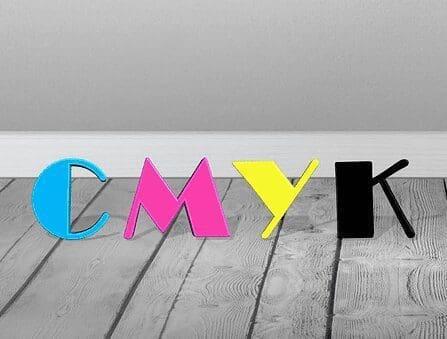In today’s increasingly conscious marketplace, consumers—particularly millennials and Gen Z—are making purchasing decisions that extend beyond product quality and price. They’re voting with their dollars, supporting businesses that align with their values, and taking their business elsewhere when companies fail to meet their ethical expectations.
The Power of Purpose in Business
A recent development in the business world highlights this trend perfectly. As reported by DesignRush, Ben & Jerry’s founders are exploring a potential buyback of their iconic ice cream brand from Unilever, potentially seeking “socially conscious investors” to support the transaction.
“If Cohen and Greenfield succeed in reacquiring Ben & Jerry’s, it could set a precedent for legacy founders reclaiming control to realign brands with their original social missions,” notes Andrea Surnit in her article published on March 3, 2025. Read the full article here
While this high-profile example demonstrates the tension between corporate ownership and maintaining a social mission at scale, small businesses actually have a distinct advantage in this new landscape.
Small Business, Big Impact
“From what we’re seeing all across the globe right now, I think it’s safe to say that people are realizing they have buying power and that essentially they are voting every time they make a purchase,” notes John Hofmann, Founder of Fusion Marketing. “More and more I’m seeing people choosing to support companies that align with their values and morals.”
This shift creates unique opportunities for small businesses that can authentically communicate their values and build genuine connections with like-minded customers.
Community Connections: Value Alignment in Action
Value alignment doesn’t always require global initiatives. Sometimes, it manifests in local community engagement. Hofmann shares a revealing example from Fusion’s own community:
“The community where Fusion is located was considering a ‘road diet‘ on one of their main roads. The local hardware store was very vocal about their disapproval. Regardless of my opinions, local community members vowed to support the business for taking a stance, while others said they would be taking their business elsewhere for ‘hindering progress’ in the community.”
This simple anecdote illustrates how taking a position—even on a local issue—can attract customers who share your values while naturally creating distance from those who don’t. The result is a more aligned customer base that feels a deeper connection to your business.
Building Value Alignment Into Your Business Model
Some businesses take value alignment further by embedding it directly into their business models. The now-famous TOMS shoes one-for-one program, where every purchase triggered a shoe donation, revolutionized how businesses could integrate giving into their core operations.
“TOMS founder Blake Mycoskie created a one-for-one program where every time you purchase a shoe, one was donated,” explains Hofmann. “For anyone interested in sustainability or global welfare, this is obviously going to be a weighted option in comparison to traditional brands.”
Fusion Marketing is following this lead with its upcoming Pairadox Project, demonstrating how even service-based businesses can build giving into their core model.
“We’re actually in the home stretch of launching a new project for Fusion called the Pairadox Project where every time a client hires us for logo design or web development, we will be donating the equivalent back to a non-profit or mutual aid program,” shares Hofmann. “This is one of the ways that we can give back to the community of small businesses that we love while supporting the programs that are changing the communities we live in.”
Practical Steps for Small Businesses
For small businesses looking to gain market share through value alignment, consider these approaches:
Identify Your Core Values: What matters most to your business beyond profit? Environmental sustainability? Worker welfare? Community development? Educational access? Define what you authentically care about.
Communicate Transparently: Share your values openly through your marketing, social media, and even physical store or office space. Let customers know what you stand for.
- Take Meaningful Action: Words without action quickly read as empty marketing. Implement practices, policies, or programs that demonstrate your commitment.
- Build Community: Connect with customers who share your values by creating opportunities for engagement around shared interests and concerns.
- Be Consistent: Ensure your values permeate every aspect of your business—from supply chain to employee treatment to customer service.
The Millennial and Gen Z Factor
This approach is particularly effective with younger consumers. Research consistently shows that millennials and Gen Z prioritize purpose alongside product when making purchasing decisions. According to numerous studies, these generations are:
- More likely to research a company’s values before purchasing
- Willing to pay more for products from socially responsible companies
- Quick to spread the word about businesses that align with their values
- Equally quick to boycott those that violate their ethical expectations
Authenticity Matters
Perhaps most importantly, value alignment must be authentic. Today’s consumers have finely tuned “authenticity radars” and can quickly detect when values are being used merely as a marketing tactic—sometimes called “value-washing.”
“When businesses genuinely align with values that matter to their target customers, they’re not just selling products or services—they’re inviting customers to participate in their mission,” notes Hofmann. “That creates a level of loyalty that price-based competition simply can’t touch.”
The Bottom Line
As consumers increasingly vote with their dollars, small businesses have an unprecedented opportunity to gain market share by authentically aligning with the values of their ideal customers. Unlike their larger counterparts, small businesses can be nimble, transparent, and deeply connected to their communities in ways that resonate powerfully with today’s conscious consumers.
By clearly identifying, communicating, and acting on their values, small businesses can find their tribe—customers who don’t just buy what they sell, but believe in why they sell it.
This article was produced through KITT, Fusion Marketing’s automation assistant, based on an interview with John Hofmann, Founder of Fusion Marketing.







